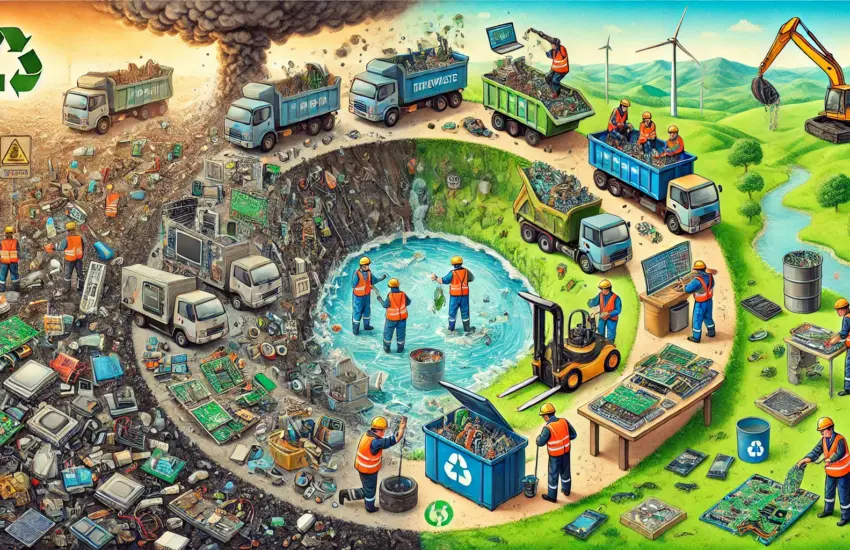Every time you upgrade your smartphone, laptop, or TV, have you ever wondered what happens to the old ones? 🤔 If they’re not properly recycled, they could become part of a growing problem called e-waste, or electronic waste. Let’s break it down step by step and see why e-waste matters and what we can do to help the planet.
Step 1: What Is E-Waste?
E-waste includes discarded electronic devices like phones, laptops, TVs, and even kitchen appliances. Basically, anything with a plug or battery that’s no longer wanted or working ends up as e-waste.
Here’s the problem: Unlike regular trash, electronics are packed with materials that are both valuable and hazardous. Metals like gold, silver, and copper can be reused, but harmful substances like lead and mercury can leak into the environment if not handled correctly.
Step 2: How Much E-Waste Are We Creating?
The numbers are staggering.
- 🌍 Globally, we produce over 50 million tons of e-waste every year. That’s like throwing away 1,000 laptops every second!
- Only about 20% of e-waste is properly recycled, while the rest ends up in landfills or is illegally dumped.
As more people upgrade their tech more often, this number keeps growing.
Step 3: Why Is E-Waste a Problem?
1. Pollution
E-waste in landfills releases toxic chemicals like lead, mercury, and cadmium into the soil and water. This can harm wildlife, plants, and even people who live near dumping sites.
2. Resource Waste
Did you know your old phone contains gold, silver, and other valuable metals? When e-waste isn’t recycled, these precious materials are lost, and more mining is needed to create new devices. Mining damages ecosystems and uses a lot of energy.
3. Health Risks
In some countries, e-waste is shipped to areas where informal workers dismantle it without proper safety gear. Exposure to toxic materials can cause serious health issues like lung disease and nerve damage.
Step 4: How Does E-Waste Recycling Help?
1. Reduces Pollution
Recycling ensures hazardous materials are safely removed and treated, preventing them from leaking into the environment.
2. Saves Resources
Recycling recovers valuable metals, which can be reused to make new gadgets. For example, one ton of recycled smartphones contains more gold than a ton of gold ore!
3. Lowers Carbon Footprint
Manufacturing new electronics from scratch requires a lot of energy. Recycling reduces the need for mining and production, cutting down greenhouse gas emissions.
Step 5: What Can YOU Do to Help?
1. Recycle Your Electronics
Don’t let your old devices gather dust or end up in the trash. Look for certified e-waste recycling programs or trade-in options.
2. Buy Refurbished or Secondhand Devices
Support the circular economy by choosing refurbished gadgets. They work just as well and reduce demand for new resources.
3. Think Twice Before Upgrading
Do you really need the latest model? If your current device still works, consider holding on to it a bit longer.
4. Spread the Word
Help friends and family understand the importance of e-waste recycling. The more people recycle, the bigger the impact.
The Bigger Picture
E-waste might seem like a small problem compared to other environmental issues, but its impact is massive—and growing. By understanding what e-waste is and taking simple steps to recycle and reuse, we can help reduce pollution, save resources, and protect our planet for future generations.
Ready to make a change? Start with your old gadgets. Small steps lead to big results! 🌱


